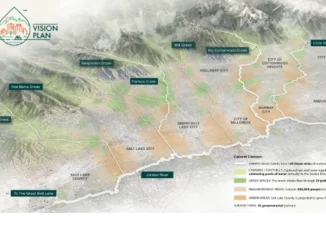
WLA recently had the opportunity to speak with Nadia Amoroso. She is a faculty member at the University of Guelph, Department of Landscape, School of Environmental Design and Rural Development. She was the Lawrence Halprin Fellow at Cornell University and the Garvan Chair Visiting Professor at the University of Arkansas. She holds a PhD from the Bartlett School of Architecture, UCL, London, and degrees in Landscape Architecture and Urban Design from the University of Toronto. She specializes in visual communication in landscape architecture, digital design, data visualization and creative mapping. She also operates an illustration studio, under her name, focusing on landscape architectural visual communication. She has written a number of articles and books on topics relating to creative mapping, visual representation, and digital design including, The Exposed City: Mapping the Urban Invisibles, Representing Landscapes: Digital, and more recently Representing Landscapes: Hybrid.
WLA | What made you want to become a landscape architect?
Nadia | I was originally interested in architecture, but visited a local University that offered a landscape architecture program, and I found the projects really interesting. I was intrigued as the design improvements of the outdoor spaces. I looked into the program more and researched what landscape architects do, and after that, I was hooked.
How would you describe your approach as a landscape architect?
Approach a project with fresh eyes. I try to understand the culture and history of the place, along with its aesthetic beauty. Each space is unique. I like to follow Christophe Girot’s “The Four Trace Concepts” approach- Landing, Grounding, Finding, and Founding. I also inspired by the works of Claude Cormier, and how is applies a sense of humor, playful and artistic measure to his works. I try to emulate that approach/ style. I am also inspired by a number of modern/ contemporary landscapes architects such as James Corner, Adriaan Geuze, Martha Schwartz, George Hargreaves, Kathryn Gustafson, Walter Hood, Kimyoung Kim, Jim Richards, Katt Orff, Chris Reed, Charles Waldheim, and many others who have made such a positive and lasting mark in landscape architecture. I try to utilize the works of many renowned landscape architects as a means of motivation and as precedents when approaching a landscape project.
You currently teach at the University of Guelph, what is the best thing about working with students?
I really enjoy working at School of Environmental Design and Rural Development at the University of Guelph. I get to see a variety of ideas and projects done by the students, and it’s great to see a variety of work and creativity. The University of Guelph has the largest undergraduate landscape architecture program in Canada, about 65 to 70 students per year. We receive 500-600 applications for the BLA program. The students are great to work with, and it’s a good way to keep updated on the latest trends and projects in landscape architects.
This year the University of Guelph was selected to participate in the International Competition for the Winter Stations project. I used that opportunity to operate the BLA4 studio project as an internal competition, in which 13 teams presented their ideas for an installation for the Winter Stations projects- with the theme of Riot. The team with the project entitled- “Rising Up” won that coveted spot. Now I am excited to work with this team to help bring it to realization. Here’s more about it. Winter Station 2018
Thanks to Nadia for taking the time for her profile. Nadia is also a jury member of the 2018 WLA Awards.



